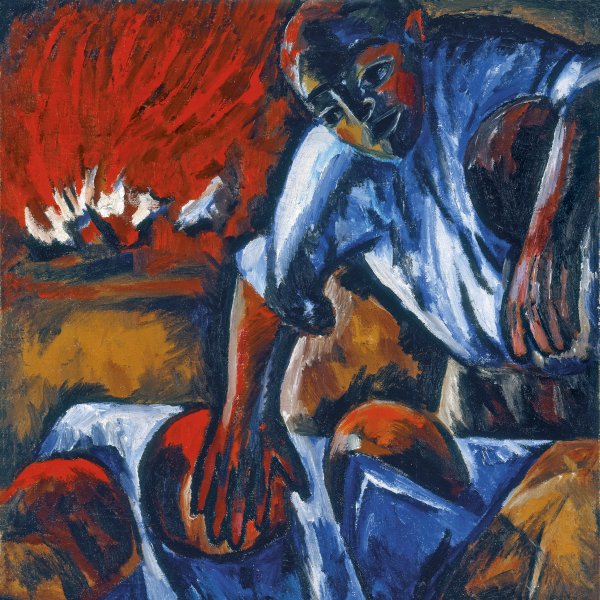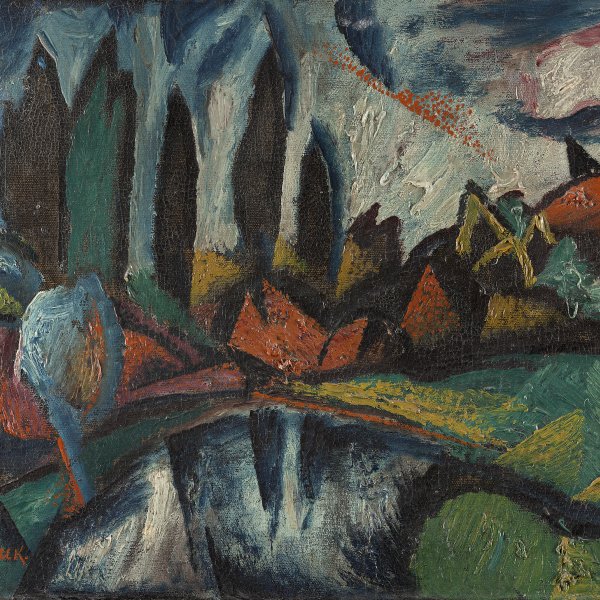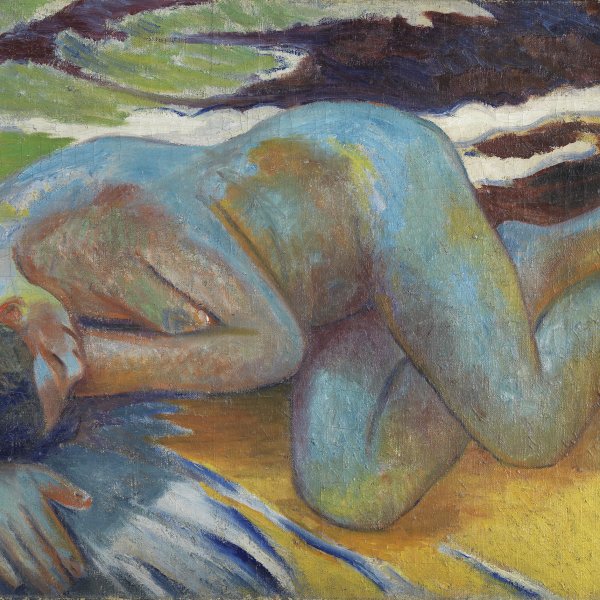Ukrainian Peasant Woman
The first decades of the twentieth century, when the Russian empire was plunged into a period of political turmoil leading to the emergence of the Soviet Union, saw a major cultural renaissance that brought with it the end of the positivistic conception of the world, giving way to the various avant-garde movements. During those years, while some artists travelled around Europe, French art became known through exhibitions such as the Salon de la Toison d’Or, organised in Moscow in 1908, showing Impressionist and Post-Impressionist paintings. At the same time artists began to turn their attention to folklore and popular traditions or to study aspects of the life of the peasantry, which had traditionally been the largest sector of the population and started to illustrate the various folk epics on canvas.
In Ukrainian Peasant Woman, Volodymyr Burliuk introduces the viewer to the world and customs of the southern regions of the empire, now Ukraine, through a colourful and synthetic language and a style derived both from the pointillism of Seurat and Signac and from folk art. The painter’s detailed depiction of the young woman’s dress and coloured bead necklaces stems from his ethnographic interest in the area.
Paloma Alarcó









